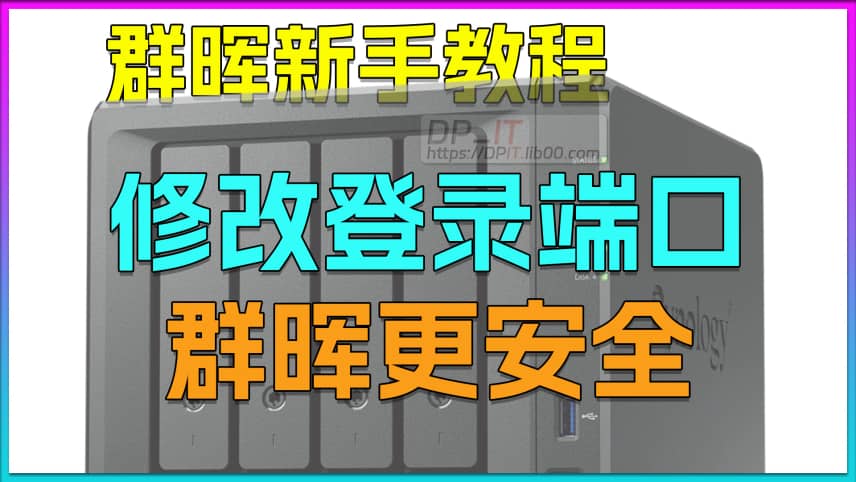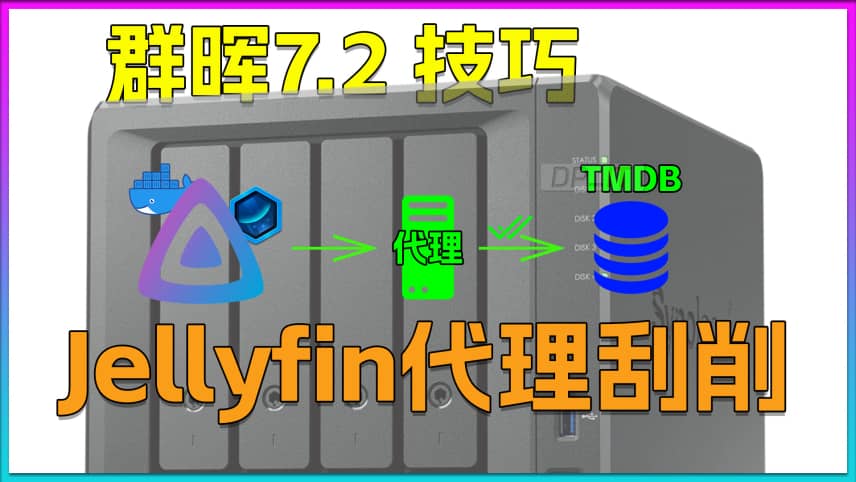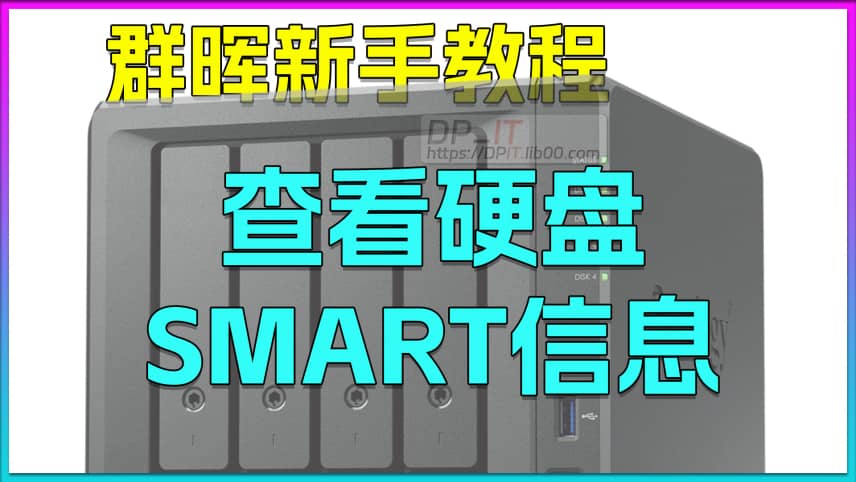
Check Real CPU Temperature via CLI on Synology DSM 7.2.1
Support Content
## 1. Introduction
This video demonstrates how to use the command-line tool sensors to view the actual CPU temperature on Synology 7.2.1 system, covering: installation and usage of related command-line tools.
Disclaimer: Released with DP_IT video, free to use, any commercial activities such as resale are prohibited. If someone sold this to you, please request a refund. Website: https://dpit.lib00.com
## 2. List of Commands Used in the Video
### 1. Install/Update ipkg
> //Enter working directory
cd /volume1/eeTmp/t/
> //Create new folder
mkdir lm-sensors
> //Enter folder
cd lm-sensors
> //Download ipkg script
wget http://ipkg.nslu2-linux.org/feeds/optware/syno-i686/cross/unstable/syno-i686-bootstrap_1.2-7_i686.xsh
> //Grant execution permission
chmod +x syno-i686-bootstrap_1.2-7_i686.xsh
> //Run script
sh syno-i686-bootstrap_1.2-7_i686.xsh
> //Update ipkg
ipkg update
### 2. Install sensors
> ipkg install lm-sensors
### 3. Use command line to view CPU temperature
> sensors
### 4. Display CPU temperature every 5 seconds
> while true; do clear; sensors; sleep 5; done
### 5. Display GPU usage percentage
> docker run --privileged --rm -it --entrypoint=/usr/bin/intel_gpu_top ghcr.io/xpenology-community/docker-intel-gpu-tools:latest
Summary Content
# Check Real CPU Temperature via CLI on Synology DSM 7.2.1
## 📋 Video Overview
This tutorial provides a comprehensive guide on how to check the real CPU temperature on Synology NAS (DSM 7.2.1) using command-line tools. Since the temperature displayed in Synology's Info Center may not always be accurate, using command-line utilities enables more precise temperature monitoring, which is crucial for NAS system maintenance and health monitoring.
---
## 🎯 Core Content
### Why Use Command Line for Temperature Monitoring?
While Synology NAS provides temperature display in the Info Center, the readings can be inaccurate in certain situations. Command-line tools offer:
- Accurate real-time CPU temperature data
- Individual core temperature readings
- CPU temperature thresholds (high and critical temperatures)
- Real-time temperature monitoring capabilities
### Detailed Installation Steps
**Prerequisites:**
- Logged into NAS system
- Switched to root account (refer to author's previous videos for details)
**Installation Process:**
1. **Create Working Directory**
```bash
cd /volume1/temp
mkdir lm
cd lm
```
2. **Download Installation Package**
- Download signal-related installation file (specific filename provided in video)
- Downloaded file appears in white (non-executable state)
3. **Grant Execute Permission**
```bash
chmod +x [filename]
```
- File turns green when executable
4. **Install rpkg Package Manager**
```bash
sh [installation_file]
```
- rpkg is similar to App Store for package management
5. **Update and Install Temperature Monitoring Tool**
```bash
rpkg update
rpkg install lm-sensors
```
- "Successful" message indicates successful installation
### Temperature Reading and Interpretation
**Basic Command:**
Running the temperature tool displays:
- **Package ID 0**: Overall CPU temperature (aggregate reading)
- **High Temperature**: 105°C (maximum normal operating temperature)
- **Critical Temperature**: 105°C (critical threshold, triggers automatic shutdown)
- **Core 0/1/2/3**: Individual CPU core temperatures
**Temperature Variance Notes:**
- Command-line readings are typically more accurate than GUI display
- Individual core temperatures are usually slightly lower than overall CPU temperature
- Testing showed temperature differences of 7-11°C (varies dynamically)
---
## 🔄 Advanced Tips: Real-Time Temperature Monitoring
**Loop Refresh Display (5-second intervals):**
```bash
while true; do [temperature_command]; sleep 5; done
```
- Temperature data refreshes every 5 seconds
- Press `Ctrl + C` to terminate the loop
**Multi-Window Monitoring Strategy:**
- Window 1: Real-time CPU temperature monitoring
- Window 2: GPU utilization monitoring (using commands from previous videos)
- Web Interface: System operations
Linux's underlying architecture supports single-user multi-session login, allowing multiple SSH windows for comprehensive system monitoring.
---
## 💡 Practical Value
1. **Hardware Monitoring**: Accurately track CPU temperature to prevent overheating damage
2. **Performance Optimization**: Combined with GPU monitoring to understand temperature changes during hardware transcoding
3. **System Maintenance**: Early detection of cooling issues to extend hardware lifespan
4. **Linux Learning**: Familiarize with command-line operations and low-level system management
---
## 📌 Important Notes
- All commands will be provided in a shared document at the end of the video for easy copying
- Temperature thresholds may vary across different NAS models
- Regular temperature checks recommended, especially during high-load operations
- CPU temperature correlates with GPU temperature (in iGPU hardware transcoding scenarios)
---
## 🏷️ SEO Keywords
Synology NAS, DSM 7.2.1, CPU Temperature Monitoring, Command Line Tutorial, Linux System Administration, NAS Maintenance, Hardware Monitoring, System Optimization, SSH Operations, rpkg Package Manager
---
## 🔗 Related Topics
- Synology NAS system administration
- Linux temperature monitoring tools (lm-sensors)
- Hardware health monitoring
- NAS performance optimization
- Command-line system management
Related Contents
View HDD SMART Info on Synolog...
Duration: 12:19 | DPSunshine+Moonlight+Win10 Remot...
Duration: 05:10 | DPClaude Code Usage Statistics: ...
Duration: 03:50 | DPClaude Code Status Bar: Instal...
Duration: 06:47 | DPiKuai OS VLAN Beginner's Tutor...
Duration: 09:18 | DPClaude Code Conversation Recov...
Duration: 02:48 | DPRecommended

DeepSeek Official API Recharge...
01:50 | 4Welcome to the DeepSeek beginner tutorial series. ...

Synology DSM Change Login Port...
01:23 | 2How to modify the login web port in Synology DSM s...

Sunshine+Moonlight+IPv4 Remote...
15:02 | 16Using Sunshine+Moonlight to implement a remote gam...

Jellyfin Proxy Scraping for Th...
04:04 | 5Jellyfin cannot directly use TheMovieDb for scrapi...





